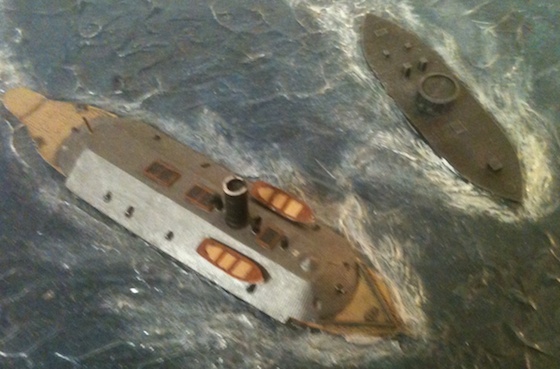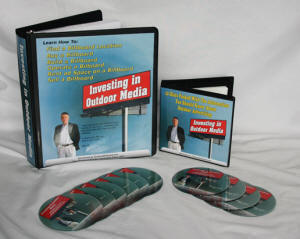Memo From Frank
The spin-off of CBS Outdoor has given a general idea of the value of today’s billboard. The public offering was valued at $3.2 billion, and included 321,000 billboard units. A quick use of your calculator will show this valued each unit at around $9,968 and, with two faces to most billboards, a value of around $20,000 per unit. While there are units valued at several times that, it dispels the myth that all billboards are super expensive. Always remember that billboards are nothing more than an income property – their value is completely a function of the money they earn. Another interesting fact is that those 321,000 ad faces included only 19,000 clients, so the average client, assuming 20% vacancy, rents 14 ad faces each, which is Exhibit A to the fact that the bulk of CBS’s billboard clients are national advertisers, and not local. Finally, the company showed $1.3 billion of revenue, but only $143 million of net income, which is only around 10% of revenue. That’s not very impressive, considering the fact that most small operators have a 60% margins. The moral: big billboard companies rarely run as profitably as their smaller competitors.
Is That A Fad Or An Industry Shift?

When the Merrimac met the Monitor in 1862, it ushered in the era of the “ironclads” – ships made of steel that had low profiles and were extremely hard to sink. Case in point, in two days of fighting, neither the Merrimac nor the Monitor could figure out how to sink each other. But in Europe, all orders for traditional wooden warships came to an end. Everyone had figured out that the new design was an industry shift and not merely a fad.
What are the billboard “shifts” of the last 50 years?
The “shifts” would include the invention of the steel monopole, the invention of the halophane light, the invention of vinyl, and the invention of LED. These are the inventions that “stuck” and became a permanent fixture – that changed the way the industry operates.
What are the billboard “fads” of the last 50 years?
The “fads” include tri-vision (although it still exists), solaray, AM radio signal messages, and slide projection billboards. These fell apart either due to inability to operate in the real world, or difficulty in attracting and retaining consumer interest.
How can you tell the difference?
The hallmark of a “shift” is an invention that’s simple to execute, durable, and creates a great return for its cost – what Steve Jobs described as “insanely great ideas”. One way to see what’s a fad from a shift is simply time. Many things look remarkable initially, and then fizzle out over the near term. Before you buy into the latest thing, watch and see if it’s still around in a year.
Conclusion
The billboard industry has seen some shifts and fads over the last 50 years. Smart operators did not commit their resources until the conclusion was clear. They waited a little longer to see if the invention lasted and held the consumer’s interest. Watch out for the shifts, and adapt to them as soon as they are identified. Don’t be like a wooden ship facing the ironclads – don’t get sunk because you failed to differentiate between permanent and temporary improvements.
The Arts And Sciences Of Billboard Success
Some people are right-brain and some are left-brain. Some are good with math, others are good with verbal skills. To be a successful billboard owner, you have to have a good ability at both. I call this mixture of both math and verbal skills “the art and science” of the billboard business. I have seen many people who are fantastic at one set of skills fail miserably because they did not understand or polish their other skills. Don’t let that happen to you.
The Art of Billboards
Negotiation is an art form. So is renting advertising space. Another art form is creating the designs that go on the signs. Basic “street smarts” in talking to potential land owners is important, as is interacting with the city and state inspectors. These are skills that they don’t teach in school, and that are learned through trial and error in social situations. If you do not have good “art” skills, then take efforts to improve them. One good resource is Toastmasters, which is free and can improve your public speaking and sales confidence. Or you might become an avid reader of sales and negotiation books.
The Science of Billboards
Finding the correct zoning and spacing for a billboard is a “science” skill. You have to mark up the correct zonings and take accurate measurements. So is doing market studies on rents and figuring out what size and height to build a billboard. Some people have trouble doing these skills without getting bored, and others will just procrastinate and look at them as homework assignments that are unpleasant. To correct these behaviors, you have to accept the fact that they are a necessary evil and you can’t get anywhere without them. Or, if you are a “science” person, you may find this your favorite part of the billboard process.
How to Mix Them Effectively
So the bottom line is that all successful billboard operators have to succeed at both skills. You have got to force yourself out of your comfort zone on our weak skill set, and make improvement. Very few people are naturally good at both disciplines. Those that succeed acknowledge that weakness and work to correct it. There are no one-dimensional billboard owners out there. Which type am I? I’m definitely an “art” person. But I learned early on that I would have to push myself on the “science” side if I was going to get anywhere.
Conclusion
Successful billboard owners are well-rounded. They can perform at a high level with either art or science skills. But few started out that way. Acknowledge your weak side, and start improving it. Your future depends on it.
Billboard Home Study Course
![]() How to Find a Billboard Location
How to Find a Billboard Location
![]() How to Buy a Billboard
How to Buy a Billboard
![]() How to Build a Billboard
How to Build a Billboard
![]() How to Operate a Billboard
How to Operate a Billboard
![]() How to Rent Ad Space on a Billboard
How to Rent Ad Space on a Billboard
![]() How to Sell a Billboard
How to Sell a Billboard
Get Your Copy Now!
The Market Report
Prices Are Delayed By At Least 15 Minutes
